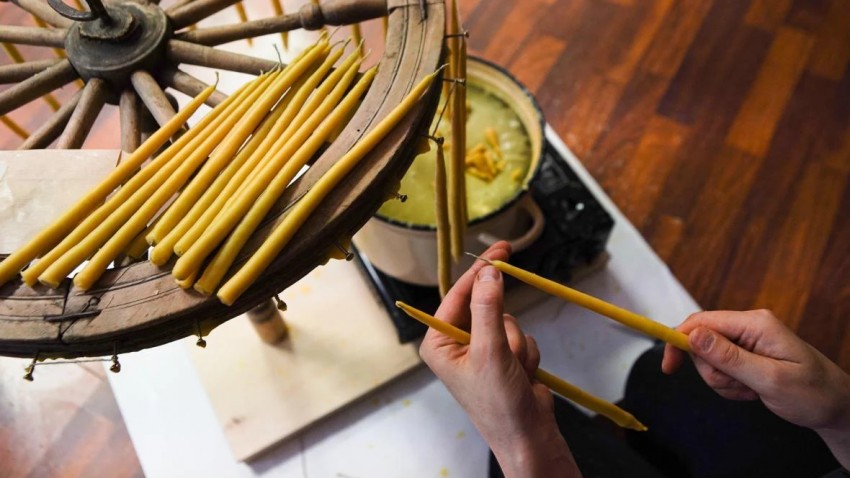Beeswax candle making circle

Candlelight radiates coziness, creates the warmth of a home, delights the heart and soul. We give and receive candles as gifts, buy them for the biggest holidays of the year, buy a colorful and deliciously scented candle at sales, but do we wonder what the candles are made of? Why do they smell so delicious? And why are they so cheap?
Real candles are now a rarity. Paraffin is almost always used in the mass production of candles as a cheap, non-renewable, dark gray by-product of petroleum. In the manufacture of candles, it is bleached with various chemical solvents. Acrolin or similar carcinogens are commonly used to harden paraffin. Synthetic fragrances emit a pleasant aroma, so the candle smells strong even when at rest. A very important ingredient in a candle is the wick. Unfortunately, a large number of mass-produced candle manufacturers lubricate candle wicks with lead, as this prolongs the burning time of the candle, but lead wicks emit substances that are dangerous to humans. And although lead was banned from use in the manufacture of candle wicks in 2003, lead wax candles still occur in supermarkets. Colored paints give the candle its distinctiveness, but unfortunately they are usually synthetic, made from offal of oil and contain carcinogenic substances. Candles are often made using additives of different origins that improve the burning quality of the candle. Stearic acid is a dangerous fatty chemical (a mixture of animal fats and some vegetable fats) added to paraffin candles to increase the burning temperature of the candle and prolong the burning time. Vybar is a polymeric material used as a substitute for stearic acid. This material gives the colors brightness and helps keep the fragrant oils in the wax. Various microcrystalline materials extracted from oil are mixed into the candles to give shine, improve color integrity. When burned, the paraffin candle releases soot, toxic substances and compounds such as formaldehyde and naphthalene. These compounds are deposited on all surfaces of the house, absorbed into upholstered furniture, carpets and pillows, clothing. It enters the digestive system, settles in the airways, making the lungs and all organs worse supplied with oxygen.
So what should you do to protect yourself and the environment from harmful substances while enjoying the benefits of candles? You can choose beeswax or soy wax candles and it will be a really natural alternative to paraffin candles. We offer you to pour candles from natural beeswax with your own hands. Learn how to tell if a candle is real or not and whether paraffin or other additives have been added to the wax and a myriad of other tricks and secrets about this old craft. We will also talk about bees and wax cleaning procedures. We'll cast candles in the old way (with a casting circle), which appeared in the 14th century in Dzūkija and has survived only in some villages of Šilinė.